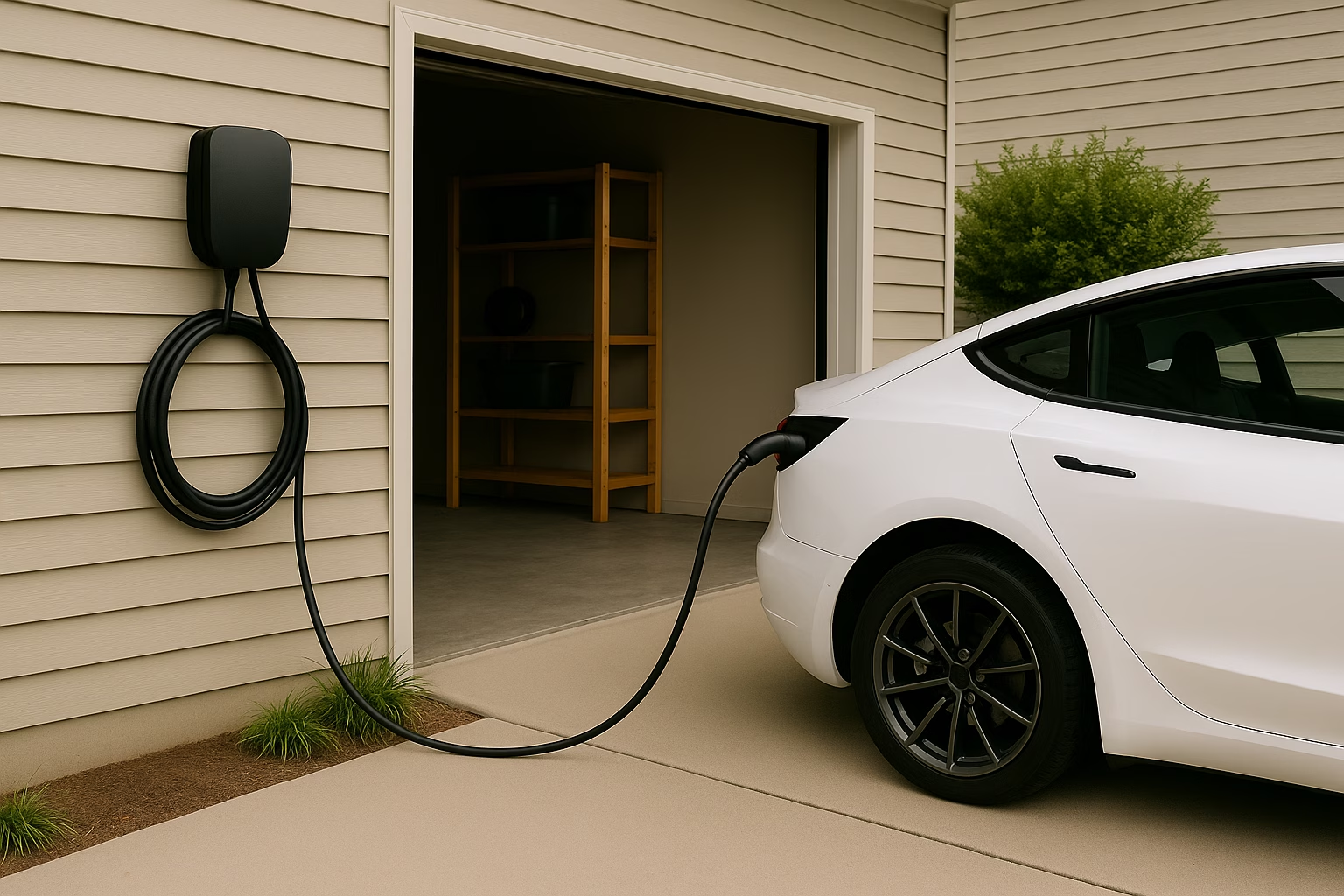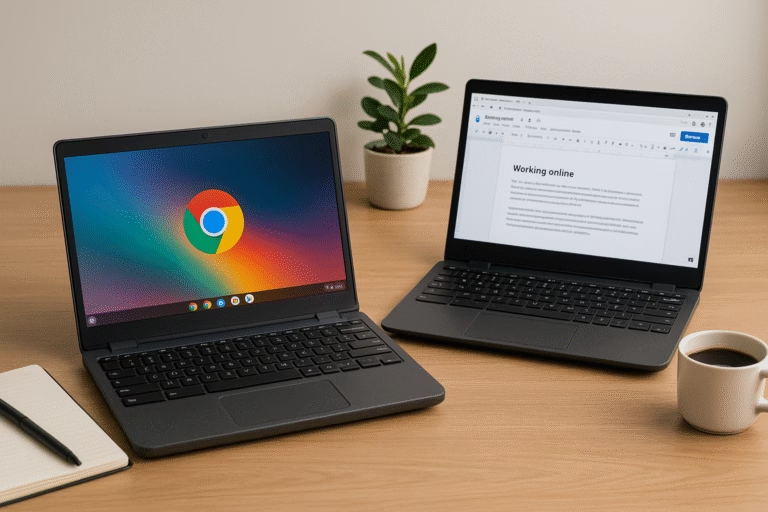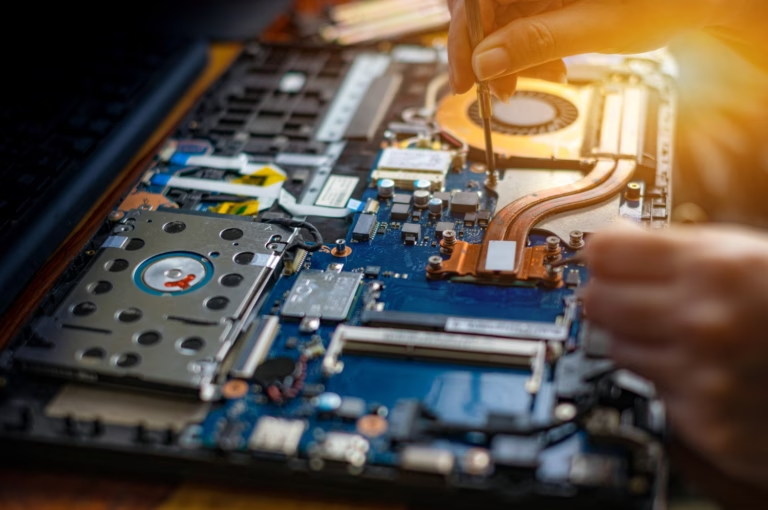Home EV Charging Guide for 2025: Everything You Need to Know

As electric vehicles (EVs) continue to grow in popularity, more drivers are searching for a home EV charging guide to help them navigate installation, equipment, and charging options. Charging at home is not only more convenient, but it can also be faster and more cost-effective than relying on public stations.
In this guide, we’ll walk you through everything you need to know before installing an EV charger at home. From charger types and plug compatibility to installation tips, charging speeds, and utility savings, we’ll help you make smart, informed choices for your EV lifestyle.
What is Home EV Charging?
Home EV charging means powering your electric vehicle from your residence either through a standard wall outlet (Level 1) or a faster, dedicated charging station (Level 2). This setup allows you to conveniently recharge your car overnight or during the day without needing to rely on public infrastructure.
There are two main types of home charging:
- Level 1 Charging: Uses a standard 120V household outlet. It’s slow, typically adding 3–5 miles of range per hour, but may be suitable for plug-in hybrids or light daily driving.
- Level 2 Charging: Requires a 240V outlet or hardwired station. Much faster, adding 20–40+ miles of range per hour, and is ideal for daily EV drivers.
Most EV owners eventually opt for a Level 2 charger to significantly reduce charging time and increase convenience.
Types of EV Chargers: Level 1 vs Level 2
When it comes to home charging, your main options are Level 1 and Level 2 chargers. Here’s how they compare:
| Feature | Level 1 Charger | Level 2 Charger |
|---|---|---|
| Voltage | 120V (standard outlet) | 240V (dryer-style outlet or hardwired) |
| Installation | No installation required | May require electrician for setup |
| Charging Speed | 3–5 miles of range per hour | 20–40+ miles of range per hour |
| Ideal For | Plug-in hybrids, light daily driving | Fully electric vehicles, regular driving |
| Cost to Install | Free (uses existing outlet) | $300–$1,200+ (equipment + installation) |
Bottom Line:
If you drive a fully electric vehicle or have a long daily commute, a Level 2 charger is usually worth the investment for speed and convenience.
What Equipment Do You Need for Level 2 Charging at Home?
Setting up a Level 2 EV charger at home isn’t as simple as plugging in a device. Here’s what you’ll need to get started:
A 240V Power Source
Level 2 chargers require a 240V outlet, similar to what your dryer or oven uses. If you don’t already have one near your parking area, you’ll need an electrician to install it.
Pro Tip: Some EV chargers can be hardwired instead of plugged in, which may be more suitable for outdoor installations or cleaner setups.
A Level 2 EV Charger
There are many Level 2 charger models available. Some plug into a NEMA 14-50 outlet, while others must be hardwired. Look for a charger with:
- At least 32–40 amps of power delivery
- A cable length of 20 feet or more
- Compatibility with your EV’s plug type (J1772, Tesla NACS, or CCS)
- Smart features like scheduling, app control, and energy tracking
A Safe, Accessible Mounting Location
Most chargers are wall-mounted indoors or outdoors. You’ll want a spot that:
- Keeps the charger out of the elements (if not weatherproof)
- Allows the cable to comfortably reach your vehicle’s charging port
- Minimizes tripping hazards and cable strain
Charging Plug Types: Know Your Connector
Before buying a charger, make sure it’s compatible with your EV. There are three main plug types used in North America:
J1772
This is the standard connector used by most non-Tesla electric vehicles for Level 2 charging. Nearly all public and home chargers support this plug.
Tesla (NACS – North American Charging Standard)
Teslas use its proprietary plug now known as NACS. Tesla’s Wall Connector charger is optimized for Tesla vehicles but can work with other EVs using an adapter.
CCS (Combined Charging System)
CCS plugs are primarily used for DC fast charging at public stations, not typically for home use. However, some vehicles use a CCS port in addition to J1772 or NACS for rapid charging.
Important Tip: Always check your EV’s charging port before purchasing a charger. Some chargers now come with built-in NACS connectors, while others may require an adapter for Tesla compatibility.
Charging Speed: How Fast Is Level 2 Charging?
Level 2 chargers offer a significant upgrade in speed compared to the standard Level 1 charger that comes with most EVs. While a Level 1 charger may take over 24 hours to fully charge an EV, a Level 2 charger can typically add 20 to 30 miles of range per hour, depending on your vehicle and the charger’s output.
What Affects Charging Speed?
- Amperage: Most at-home Level 2 chargers range from 16A to 50A. Higher amperage = faster charging.
- Your EV’s onboard charger: Your car can only accept as much power as its internal charger allows.
- Electrical setup: A properly installed 240V outlet or hardwired connection is key to achieving full speed.
Example:
A 40A Level 2 charger (like many mid-range models) can deliver around 9.6kW of power, adding ~25 miles of range per hour on most EVs. That means an overnight charge can easily top off most batteries.
Quick Tip: Faster charging is great—but only if your daily driving range requires it. If you’re only topping off 20–40 miles per day, even a 16A charger may be more than enough.
Installation Requirements: What You Need for a Level 2 Charger at Home
Installing a Level 2 charger at home requires more than just plugging into a wall outlet. These chargers use 240V power, similar to what a dryer or oven uses, and may require professional installation.
Key Requirements:
- A dedicated 240V circuit: Most homes have 240V available, but you may need a new circuit added to your electrical panel.
- Ample panel capacity: Your home’s electrical panel must have room for the new circuit. An electrician can check this.
- Proper outlet type: Some chargers plug into a NEMA 14-50 outlet (like an RV plug), while others are hardwired.
Installation Options:
- Plug-in models: Easier to install if you already have the right outlet.
- Hardwired models: More permanent, often recommended for outdoor use or higher amperage chargers.
Important: Always hire a licensed electrician for installation. Improper setups can lead to fire hazards or void your EV charger warranty.
Charging Costs & Utility Rate Plans: What to Know Before You Plug In
Charging your EV at home is usually cheaper than using public stations, but the actual cost depends on your electricity rate and charging habits.
Typical Home Charging Costs
- National average: Charging an EV at home typically costs $0.04–$0.06 per mile, or $8–$15 for a full charge, depending on battery size and local rates.
- Time of use (TOU) plans: Some utilities offer discounted rates for charging at night, when demand is lower, perfect for overnight EV charging.
Check With Your Utility Provider
- Ask if they offer EV-specific rate plans or rebates for charger installation.
- Some providers also offer smart metering or incentives for using EV charging during off-peak hours.
- Tools like PlugStar or your local utility website can help estimate costs and discover available programs.
Pro Tip: If your utility offers a TOU plan, setting your EV to charge after 9 p.m. could cut your energy costs dramatically.
Charging Etiquette & Best Practices for Homeowners
Home EV charging isn’t just about plugging in; it’s also about being a considerate, informed EV owner, especially if you share a home, garage, or multi-family space.
Be Mindful of Shared Spaces
- If you live in a condo or apartment with shared charging stations, don’t leave your car plugged in longer than necessary.
- Clearly label your charger or parking space if required by HOA or building rules.
Schedule Your Charging
- Most EVs let you set a charging schedule, which helps:
- Save money with off-peak electricity rates.
- Prevent grid strain during high-demand hours.
- Keep the charger available for other household drivers.
Keep Your Setup Safe
- Use a properly grounded, weather-rated outlet or professional charging station.
- Avoid using extension cords, which can overheat or pose fire hazards.
- Coil and store cables neatly to prevent tripping or damage.
Maintain Your Charger
- Occasionally, check your charger and cables for wear, debris, or water damage.
- If using a smart charger, keep its firmware up to date for optimal performance and safety.
Pro Tip: Labeling your charging schedule near the station (e.g., “Charges nightly from 11pm–6am”) can help avoid household confusion in multi-EV homes.
Frequently Asked Questions
In many areas, yes. Installing a Level 2 charger typically involves electrical work, and most municipalities require a permit and inspection to ensure it’s up to code. Check with your local building department or talk to a licensed electrician.
It depends on your property rules and setup. Some HOAs and landlords allow personal charging stations with approval, especially if you have a designated parking spot. You may need to cover installation costs and meet safety requirements.
Level 1 (standard outlet): ~3–5 miles of range per hour (very slow).
Level 2 (240V): ~25–40 miles of range per hour, depending on your vehicle and charger specs. Full overnight charging is typical for most EVs with Level 2.
Most EVs sold in North America support the J1772 plug for Level 2 charging, including Tesla vehicles (with an adapter or Tesla-specific charger). Always double-check your vehicle’s port type before buying a charger.
It depends on your electricity rates. On average, charging at home costs about $0.03–$0.05 per mile driven. Many utility companies offer special EV time-of-use plans that lower costs if you charge overnight.
Smart chargers offer Wi-Fi control, energy tracking, and scheduling — but they aren’t mandatory. If you want remote access or usage insights, they’re a great upgrade. Basic models without smart features can still charge reliably.
Final Thoughts: Power Up with Confidence
Home EV charging offers unmatched convenience, long-term savings, and the freedom to start each day with a full battery — no public station required. Whether you’re new to EVs or upgrading your setup, understanding your options empowers you to make smarter choices.
From choosing the right charger and plug type to exploring smart features and utility incentives, a little planning goes a long way. And remember: you don’t have to go it alone.
At SysPros, we specialize in EV charger installations tailored to your home and your vehicle. We’ll help you select the right charger, handle the setup, and ensure everything’s safe, efficient, and code-compliant.
Need help with your EV charger installation? Book a service appointment or get in touch today!




